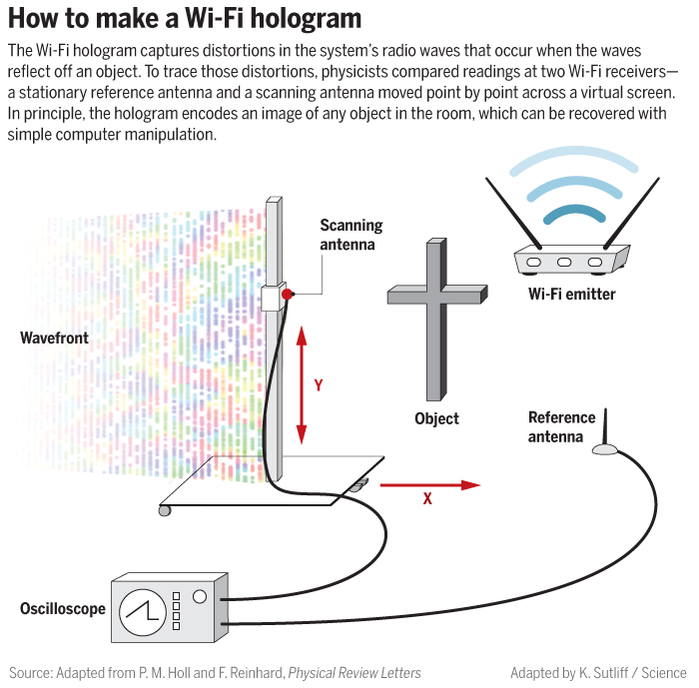
Scientists develop tech to create Wi-Fi holograms
By detecting the disruptions of Wi-Fi signals, holograms mapping the immediate vicinity are created out of thin air.
Soon Wi-Fi could do more than connect you to the internet.
Scientists at the Technical University of Munich have developed a holographic imaging process that uses the radiation of a Wi-Fi transmitter to generate three-dimensional images of the surrounding environment, down to centimeter-scale precision, according to a paper (PDF) in the Physical Review Letters announced Thursday by the university.
In other words, they can effectively make holograms out of thin air.
Generating holograms with the microwave radiation of a Wi-Fi transmitter requires merely one fixed and one movable antenna, which is much simpler than optical holograms that require elaborate laser technology, according to Friedemann Reinhard, co-author of the paper and director of the Emmy Noether Research Group for Quantum Sensors at the Walter Schottky Institute of the TU Munich.
“Using this technology, we can generate a three-dimensional image of the space around the Wi-Fi transmitter, as if our eyes could see microwave radiation,” Reinhard said in a statement. Since Wi-Fi signals penetrate walls, this means going forward it can be used to locate and recover victims buried under an avalanche or a collapsed building.
The development of this technology is still in an early state. but for those concerned about privacy, Reinhard said the movable antenna required to scan an entire room or a building would be very large and couldn’t be installed clandestinely.
By Dong Ngo